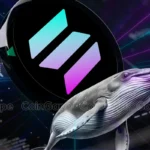Web3 is revolutionizing the digital content landscape by shifting control from centralized platforms to user-owned, decentralized ecosystems. Unlike traditional Web2 models—where large corporations monetize content and extract value from creators—Web3 introduces blockchain technology, tokenization, and decentralized finance (DeFi) to empower individuals. In this article, we explore how Web3 is reshaping digital content creation, the monetization of creative work, and the challenges that lie ahead.
The Problems with Web2 Content Models
The current digital content ecosystem is dominated by centralized platforms that control distribution, monetization, and policies. This creates several challenges for creators and consumers alike:
1. Platform Dependence and Revenue Cuts
Major Web2 platforms such as YouTube, TikTok, and Instagram dictate monetization policies, taking significant cuts from creators’ earnings.
- Examples:
- YouTube retains 45% of ad revenue, leaving creators with the rest.
- TikTok’s creator fund often pays as little as a few cents per thousand views.
2. Lack of Data and Audience Ownership
Creators rely on platforms that own user data and dictate algorithmic reach, limiting their ability to directly connect with their audience.
- Example: Instagram can reduce a creator’s visibility overnight through algorithm changes, impacting engagement and income.
3. Limited Monetization Models
Monetization in Web2 is mostly ad-driven, limiting creators to ads, sponsorships, and subscriptions controlled by platforms.
- Example: Writers on Medium depend on engagement metrics determined by the platform rather than direct support from their readers.
The Web3 Creator Economy Revolution
Web3 enables decentralized ownership, new monetization methods, and direct audience engagement, breaking away from restrictive Web2 systems.
1. Decentralized Content Ownership
By leveraging blockchain technology and NFTs, creators can own their content outright, preventing platforms from demonetizing or restricting access.
- Examples:
- Mirror.xyz allows writers to publish content as NFTs, giving them full ownership and resale value.
- Zora and Foundation enable artists to sell digital art with built-in royalty mechanisms.
2. Tokenized Monetization Models
Web3 introduces cryptocurrency, DAOs, and NFTs to enable direct monetization, cutting out intermediaries.
- Examples:
- Rally.io allows creators to launch their own social tokens for community-driven economies.
- Audius, a decentralized music platform, lets artists earn through token rewards without relying on Spotify’s low payout structure.
3. Community-Owned Content Platforms
Web3 social platforms and decentralized autonomous organizations (DAOs) allow users to govern platforms collectively, ensuring fair treatment of creators.
- Examples:
- Lens Protocol lets users own their social graphs, allowing creators to port their audience between platforms.
- Friends With Benefits (FWB) is a token-gated community where content creators collaborate and get rewarded in crypto.
Challenges of Web3 Content Adoption
Despite its potential, Web3 content creation faces adoption barriers that need to be addressed for widespread use.
1. Onboarding Complexity
Using Web3 platforms often requires crypto wallets, private keys, and blockchain literacy, creating a steep learning curve for new users.
- Solution: More intuitive onboarding experiences, such as wallet integrations via Coinbase, MetaMask, or Phantom.
2. Scalability and Transaction Fees
High gas fees on blockchains like Ethereum can make NFT transactions and micro-payments costly for creators.
- Solution: Adoption of Layer-2 scaling solutions like Polygon, Arbitrum, and Solana, which offer lower fees.
3. Content Discovery and Distribution
Web3 lacks the sophisticated algorithms of Web2 for content discovery, making it harder for creators to grow their audiences.
- Solution: Decentralized recommendation engines powered by AI and community-curated content models.
The Future of Web3 Content Creation
Web3 is still evolving, but its impact on digital content is undeniable. As decentralized technologies mature, creators will gain more control, financial freedom, and direct audience engagement.
Key Developments to Watch:
- Cross-chain Content Portability: Creators being able to use NFTs and tokens across multiple platforms seamlessly.
- Metaverse Integration: Digital content becoming an integral part of virtual worlds like Decentraland and The Sandbox.
- Decentralized Identity Solutions: Giving creators permanent online identities beyond traditional platform logins.
Conclusion
Web3 is reshaping the creator economy by replacing platform-controlled monetization with decentralized ownership and financial autonomy. While challenges remain, the shift towards tokenized models, DAOs, and blockchain-based distribution presents an exciting future for digital content. As Web3 adoption grows, it could redefine how creators engage with audiences, monetize their work, and build sustainable digital careers—without intermediaries taking a significant cut.
Stella Whitehead is a cryptocurrency journalist and fintech researcher with a keen interest in the social and economic impact of blockchain technology. With a background in global finance and digital asset regulation, she provides in-depth analysis on how crypto is reshaping traditional financial systems.



